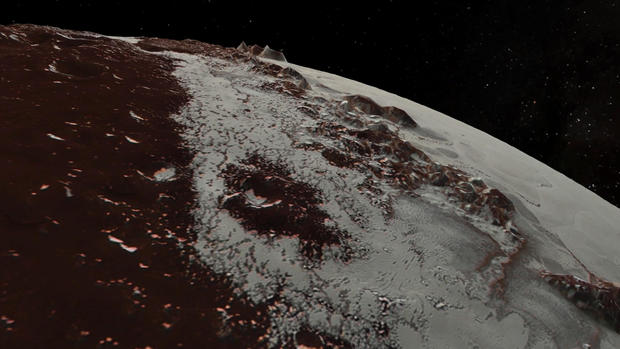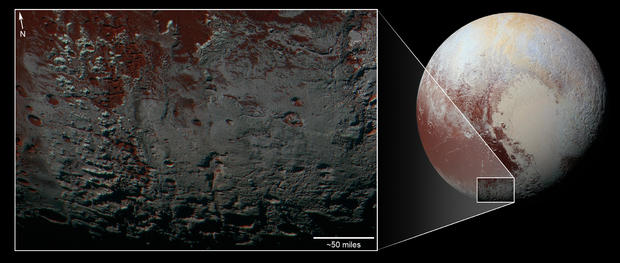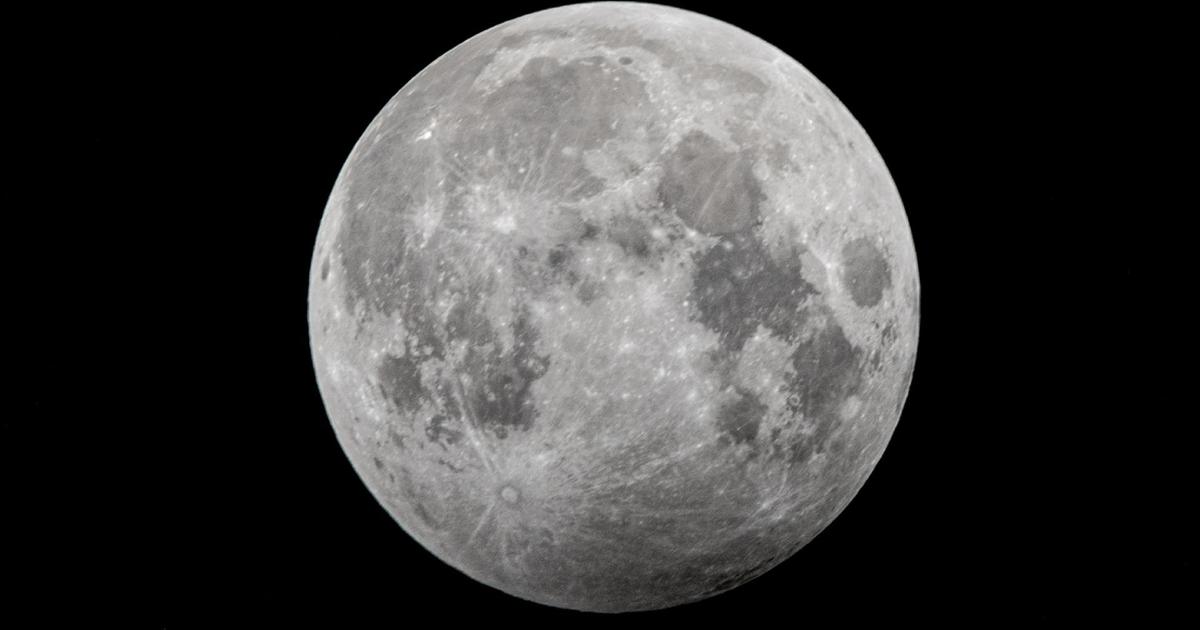Watch: NASA videos take you on a personal tour of Pluto
New video from NASA provides an up close and personal tour of Pluto's majestic mountains, icy plains, and more.
The video comes thanks to NASA's New Horizons spacecraft, which made a historic flyby of Pluto back on July 14, 2015, providing scientists with a wealth of data they are still steadily evaluating and learning from.
The team behind the mission was "blown away by the incredible diversity of terrain on Pluto and just generally, the collection of phenomena we've observed throughout the Pluto system," project scientist Hal Weaver told CBS News last year.
This week — using data from that voyage and digital elevation models of Pluto and its largest moon — scientists released two videos showing Pluto from a vantage point even closer than the spacecraft traveled.
The dwarf planet Pluto is extremely cold and topographically dynamic, with water-ice mountains, moving glaciers of molecular nitrogen ice, and a massive moon. Sitting in an area of space called the Kuiper Belt, Pluto is about 40 times farther from the sun than Earth is and only about half as wide as the United States.
The first video (below) shows Pluto's highlands, mountain ranges and deep pits; its great stretch of nitrogen ice; the western margin of Sputnik; the dark, cratered terrain called Cthulhu Macula, and more.
The video ends in the far east of the encounter hemisphere, an area called Tartarus Dorsa. (All of the descriptive and evocative names given to different aspects of Pluto's system are informal.)
The second video (below) shows Pluto's largest moon, Charon, the wide canyons of Serenity Chasma, the Dorothy Gale crater, the northern terrain of Oz Terra, the flat plains of Vulcan Planum, the mountains of Clarke Montes, and more.
The videos are edited to emphasize some of Pluto's unique characteristics. For example, topographic relief was exaggerated by a factor of two to three and certain surface colors were enhanced, according to NASA.
The space agency also a number of released detailed maps and illustrations of Pluto and its largest moon, such as this one showing possible "snowcaps" of frozen methane on mountain peaks.
"The complexity of the Pluto system — from its geology to its satellite system to its atmosphere— has been beyond our wildest imagination," Alan Stern, an investigator for the New Horizons spacecraft, said in a statement. "Everywhere we turn are new mysteries."





